Understanding Hydraulic Electric Actuators
Hydraulic electric actuators are sophisticated devices that transform electrical energy into mechanical force, streamlining the control and movement of diverse machinery and equipment. These critical components are indispensable in sectors demanding exact motion control, including manufacturing, construction, and the automotive industry. The adoption of hydraulic electric actuators enables firms to bolster the dependability and safety of their operations while amplifying productivity.
The operational principle of these actuators hinges on fluid power technology. A hydraulic pump propels fluid into a closed system, driving a piston within a cylinder to produce the necessary force for task execution. This force can be applied to control valves, shift loads, or adjust mechanical parts. The integration of an electric motor allows for precise actuator management, delivering a consistent and fluid motion crucial for numerous applications.
Hydraulic electric actuators are engineered for enterprises that demand robust and uninterrupted activity within their routine operations. They are available in a spectrum of sizes and designs, ranging from compact linear actuators for straightforward tasks to sturdy rotary actuators for substantial load management. Their versatility and strength make them a popular choice across various sectors, including machinery repair, construction, manufacturing, and domestic heating systems.
Varieties of Hydraulic Electric Actuators
The diverse array of hydraulic electric actuators mirrors their adaptability to meet distinct operational needs. Below is a synopsis of some prevalent types:
-
Rotary Hydraulic Actuators: These actuators deliver rotational motion and are selected for tasks requiring the rotation of components. They are typically used in applications that involve adjusting the position of a load or exerting torque in industrial settings.
-
Linear Hydraulic Actuators: Employed for linear movement needs, such as on conveyor systems or lifting devices, linear hydraulic actuators provide direct motion and are versatile across various industrial environments.
-
Swing Hydraulic Actuators: Equipped with a swinging arm, these actuators are optimal for applications that necessitate an arc-like motion. They are commonly found in machinery with swinging capabilities, such as cranes or excavators.
-
Push Hydraulic Actuators: Tailored for scenarios where push-button operations are prevalent, these actuators deliver straightforward linear movement. They are often integrated into domestic appliances or office furnishings that require vertical adjustments.
-
Electric Hydraulic Pump Units: This category encompasses independent electric hydraulic pump units that supply pressure to hydraulic systems without relying on a centralized power unit. They are particularly useful in portable equipment and fixed installations where mobility is not essential.
Selecting the Right Hydraulic Electric Actuator
Choosing the appropriate Hydraulic Electric Actuator for your enterprise involves a thorough assessment of application specifics, environmental conditions, and performance criteria. Here’s a guide to align your selection with your operational needs:
-
Application Requirements: Reflect on the actuator's intended purpose. Whether it's for a basic on-off function in household appliances or for intricate control in an industrial setting, the actuator's design should correspond to its functional requirements.
-
Environment: Account for the operating conditions of the actuator. In environments with prevalent dust or moisture, seek out features such as IP54 or waterproofing for protection.
-
Performance: Scrutinize the actuator's performance attributes, including speed, force output, and durability. Superior performance may entail a higher investment but could be justified by your application's demands.
-
Core Components: Inspect the resilience and quality of essential components like motors, bearings, gears, and PLCs (Programmable Logic Controllers), which can influence the longevity and maintenance costs of the actuator.
-
Customization: Certain businesses might need bespoke features, such as non-standard dimensions or specific configurations. Seek suppliers that provide OEM (Original Equipment Manufacturer) support for such customizations.
Hydraulic Electric Actuators on Alibaba.com
Alibaba.com distinguishes itself as a premier global marketplace, linking businesses with an extensive assortment of hydraulic electric actuators for a myriad of uses. With a track record spanning over two decades in orchestrating B2B transactions across more than 190 countries, Alibaba.com has cemented its status as a hub where companies can source high-quality products that precisely cater to their operational needs without sacrificing reliability or convenience.
The platform's user-friendly interface enables customers to sift through selections based on criteria such as application needs – from electric bicycles to intelligent home gadgets – ensuring the identification of the ideal actuator for their distinct requirements. Additionally, Alibaba.com's Trade Assurance program offers buyers confidence by protecting their payments until their orders are satisfactorily completed.
For firms in pursuit of tailored solutions, numerous suppliers on Alibaba.com extend OEM support alongside their standard offerings – a crucial benefit when customization is vital for specialized operational requirements. With a range from compact cylinders to formidable rotary actuators crafted from durable materials like aluminum or stainless steel, businesses can rely on locating equipment that not only fulfills their technical needs but also conforms to their quality expectations and budgetary limits.
Frequently Asked Questions About Hydraulic Electric Actuators
What is a hydraulic electric actuator?
A hydraulic electric actuator is a mechanism that transforms hydraulic pressure into a unidirectional mechanical force, utilizing a hydraulic cylinder coupled with an electric motor to achieve precise control.
How does a hydraulic electric actuator function?
A hydraulic electric actuator operates by employing an electric motor to create hydraulic pressure, which is then converted into mechanical force to move an object in a designated direction.
What are the chief uses of hydraulic electric actuators?
Hydraulic electric actuators find application across a broad spectrum, including industrial machinery, construction apparatus, agricultural equipment, medical instruments, and beyond.
What considerations are important when selecting a hydraulic electric actuator?
In choosing a hydraulic electric actuator, it is crucial to consider the necessary force, velocity, and stroke length for your application, as well as the material and construction based on environmental exposure and the type of load the actuator will manage.
Are there different kinds of hydraulic electric actuators available?
Indeed, there is a variety of hydraulic electric actuators on offer, encompassing linear, rotary, multi-turn, and intelligent actuators, each providing distinct functions and capabilities.
How can I ascertain the suitable size and force capacity for a hydraulic electric actuator?
Determining the appropriate size and force capacity for a hydraulic electric actuator hinges on the specific demands of the application. It is imperative to align the actuator's specifications with your operational requirements to guarantee optimal system performance and longevity.
Can hydraulic electric actuators be integrated with pre-existing hydraulic systems?
While many hydraulic electric actuators are designed for compatibility with existing systems, it is essential to ensure congruence among all components to uphold system integrity and performance.
What materials are typically used to construct hydraulic electric actuators?
Hydraulic electric actuators are commonly made from sturdy materials such as steel, aluminum alloys, and stainless steel to endure demanding operational environments and resist corrosion.
What customization options exist for hydraulic electric actuators?
Customization possibilities for hydraulic electric actuators may encompass OEM (Original Equipment Manufacturer), ODM (Original Design Manufacturer), or OBM (Original Brand Manufacturer) support, which can include tailored specifications and branding to meet business requirements.
Do hydraulic electric actuators come with after-sale services?
After-sale services for hydraulic electric actuators can include return and replacement policies, onsite installation, inspection services, and training, varying with the supplier's provisions.
How do I ensure the purchase of a high-quality hydraulic electric actuator?
To secure a high-quality hydraulic electric actuator, opt for suppliers that offer machinery test reports and comply with recognized quality standards. Additionally, consider suppliers with positive ratings and reviews on Alibaba.com.
What industry standards should be taken into account when choosing a hydraulic electric actuator?
Industry standards such as ISO, CE, or RoHS may be relevant depending on the regulatory requirements of your application. Verify that the products you select adhere to the pertinent standards for your sector.
Is it feasible to find a supplier on Alibaba.com that provides customized support for hydraulic electric actuators?
Certainly, numerous suppliers on Alibaba.com provide customized support, including OEM (Original Equipment Manufacturer), ODM (Original Design Manufacturer), and OBM (Original Brand Manufacturer) services, catering to businesses that require specialized product adaptations.
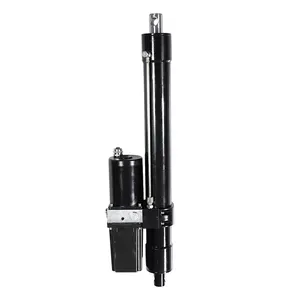



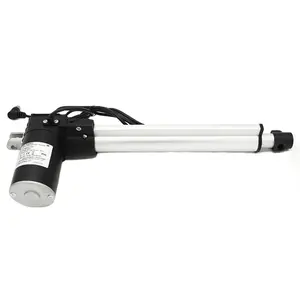




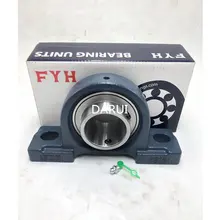



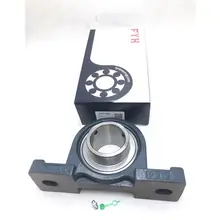


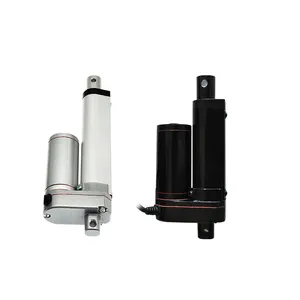
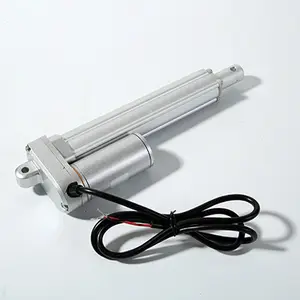

















 浙公网安备 33010002000092号
浙公网安备 33010002000092号 浙B2-20120091-4
浙B2-20120091-4